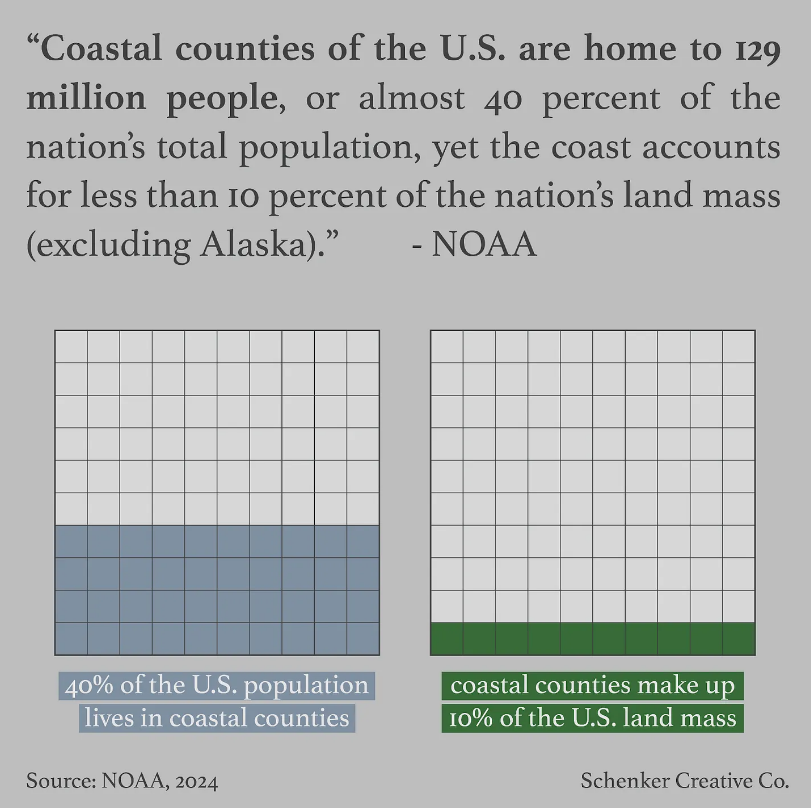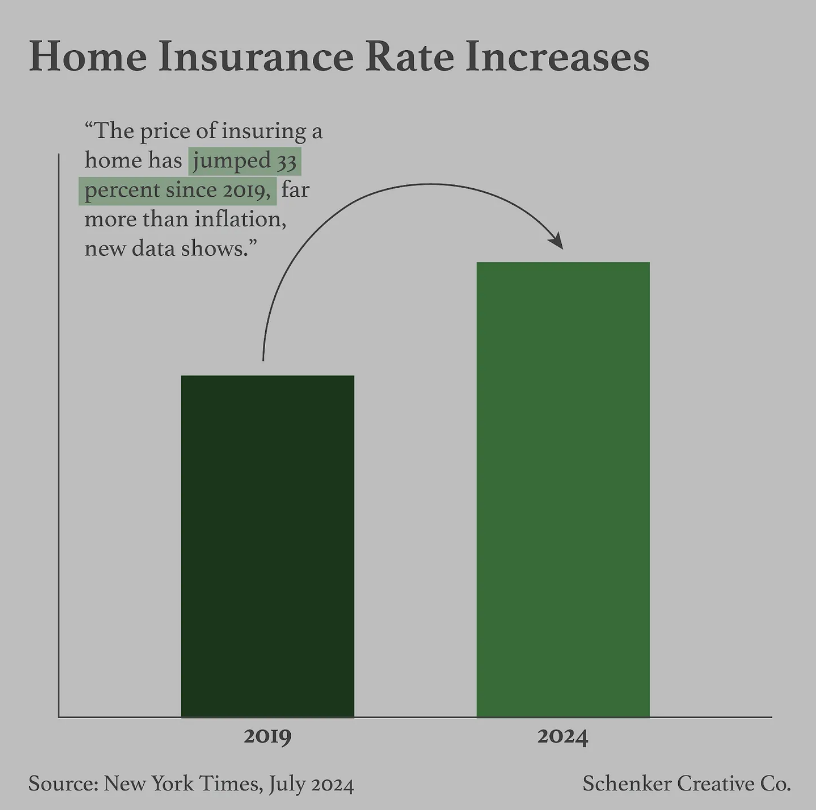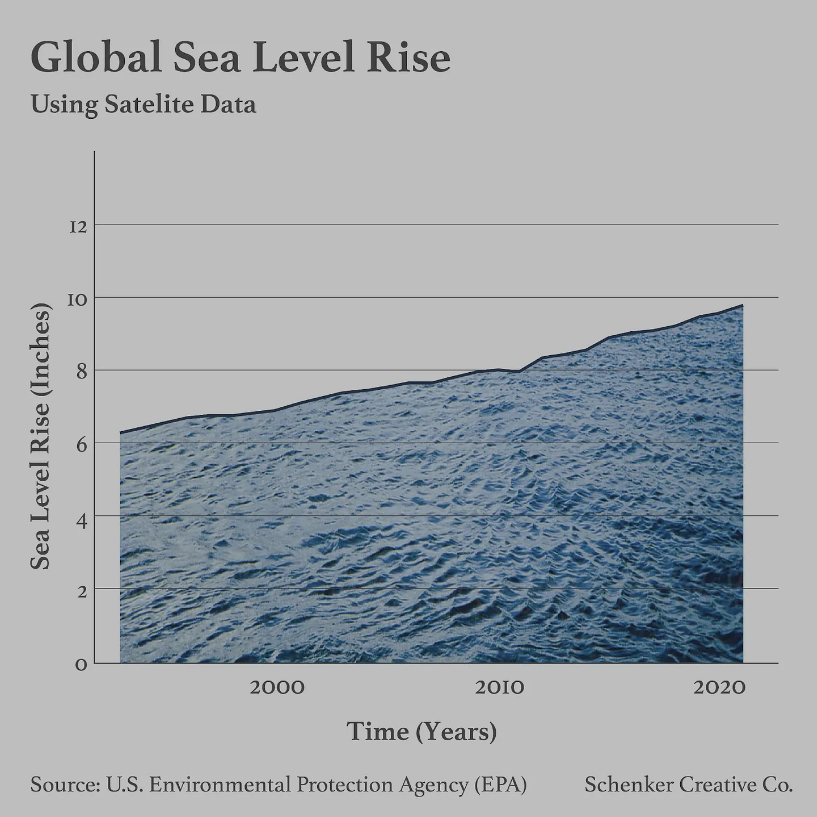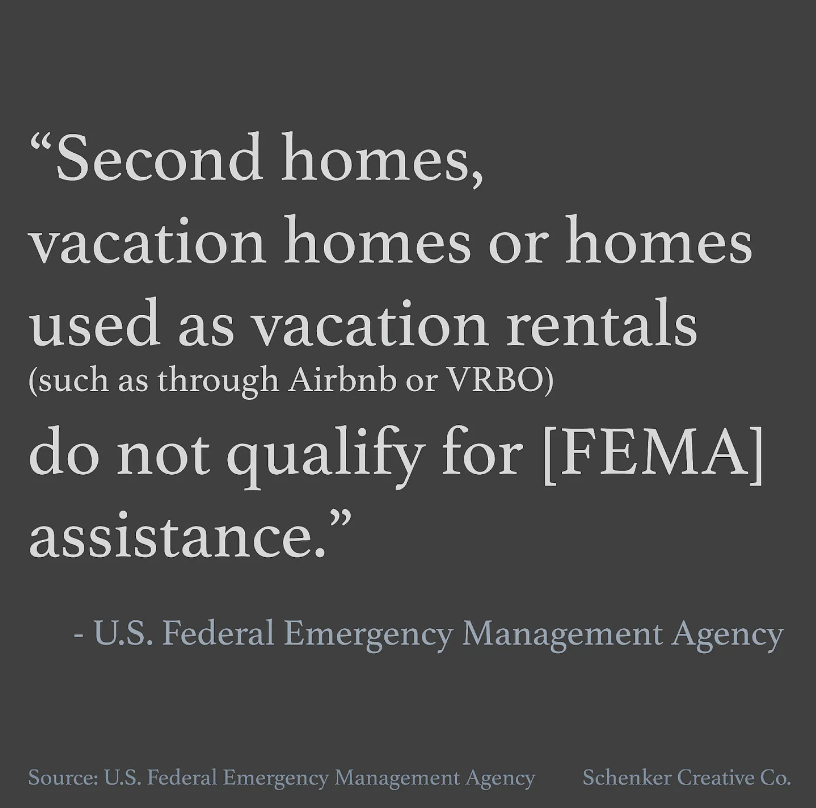
Five reasons why urban practitioners should care about resilience
Last week as this post was scheduled to go out, I stood overlooking my quaint small town where 12-plus feet of water was rushing through our Main Street. The usually slow-flowing, fun river had swelled over its banks due to increased flow from Hurricane Helene. Searching for gas, groceries, and cell service, I was again reminded why this resilience work is so important. Almost three years ago, I moved to the mountains of North Carolina from Charleston, South Carolina, because after years of resiliency planning, I no longer felt safe putting down permanent roots on the coast. While I was lucky that my home wasn’t impacted by flooding or mudslides (just one small leak of a window), I know that many others were not. It’s become increasingly apparent that there is no escaping climate risks no matter where you live. In addition to climate resilience planning, we must also design for social resilience. Building spaces that encourage neighbors to connect and support each other in good and bad times.
Resilience has become an increasingly important concept in design, urban planning, and development. At its core, it means “the capacity to withstand or to recover quickly from difficulties.” Proactively addressing environmental changes and risks to communities' health and finances can help a community save money and avoid devastation. Now more than ever, resilience should be at the forefront of designers' and urban practitioners' work. Let’s walk through a few reasons why.
1. The decisions that designers and practitioners make can influence the safety and well-being of millions of people. Forty percent of the U.S. population, approximately 129 million people, live in coastal counties—areas highly vulnerable to the effects of climate change, such as rising sea levels and increased storm activity. This number does not even account for the people living inland who are impacted by flooding and other non-coastal climate-related impacts.
2. Environmental impacts are starting to affect people’s finances in more significant ways. From 2019 to 2024, home insurance rates have increased 33 percent. This significant increase has been driven by increased claims and escalating risks such as floods, wildfires, and hurricanes. For context, in the same time period, there has been a cumulative inflation rate of 22.7 percent, illustrating that the rise in insurance costs is outpacing general inflation. This is mostly because of increased environmental risks in coastal and rural areas and the resulting financial risk to insurers. While home insurance companies are held to state and federal regulation policies that may limit rate increases and coverage, all home insurance company policies are covered by a re-insurance agency. This helps to protect companies that may receive a large number of claims in a specific area following a significant storm and allows them to access cash for claims sooner. Re-insurance companies are primarily located overseas and not limited by the same state and federal policies and regulations. This creates unique challenges.
3. One of the most pressing environmental challenges that we face is global sea level rise. Over the 20th Century, global sea levels rose almost 7 inches. As sea levels rise, issues like stormwater inundation, tidal flooding, and increasing storm events will become more common. Coastal and low-lying areas are particularly susceptible to these hazards. As sea levels rise, human housing and ecosystems will need new space to retreat to. Designers, therefore, have a responsibility to consider future water impacts in each of their new designs, ensuring that both people and the natural environment are protected and preserved as much as possible.
4. When natural disasters strike—whether hurricanes, floods, or other extreme weather events—the impacts can be devastating. Unfortunately, not every property will qualify for assistance. For example, FEMA (the U.S. Federal Emergency Management Agency) does not extend aid to “second homes, vacation homes or homes used as vacation rentals (such as through Airbnb or VRBO).” This can leave some property owners financially stranded after a storm, further emphasizing the need for resilient design that minimizes damage and reduces reliance on external aid in times of crisis.
5. Taking a proactive approach to resilience isn’t just a moral or social obligation - it makes financial sense as well. A 2018 study by the National Institute of Building Sciences (NIBS) found that every $1 in disaster mitigation efforts saves society $6 in recovery and rebuilding costs. This demonstrates the immense long-term value of designing for resilience. Projects that anticipate future risks and hazards can help avoid costly repairs and losses down the road. Every project is an opportunity to proactively address future risk.
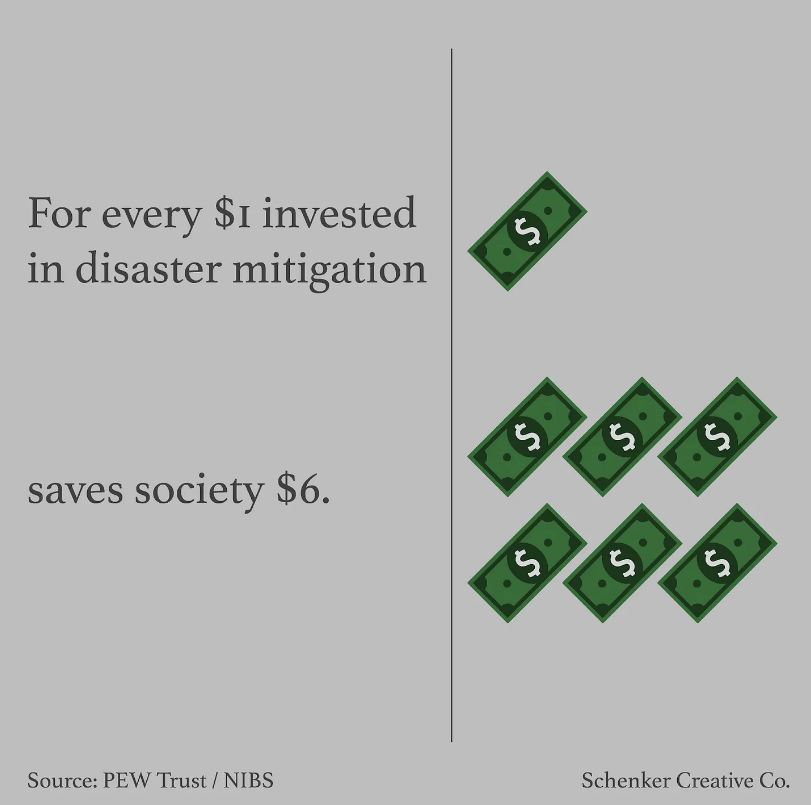
While these are just a few examples of the many data points that support the need for resilience in urban design and planning, they highlight some reasons that resiliency should be considered with every project. As urban practitioners, we are in a unique position to shape not only our cities and communities but also the future of the environment in which we live. Many cities are looking for solutions for these coastal communities, which include: managed retreat, coastal defense, nature-based solutions (dune, mangrove, and wetland restoration), elevated structures, infrastructure adaptation, improved water management systems, and policy changes. Proactively addressing the changing environment is difficult, but it is essential to create sustainable, livable spaces for generations to come.
If you are able, please consider donating to organizations providing disaster relief. For example, Beloved Asheville, World Central Kitchen, or North Carolina Donations.
You can learn more about Taylor Schenker and her data visualization work at Schenker Creative Co. on their website and instagram.
Note: This article first appeared in the ENU Exchange, a newsletter written by Emerging New Urbanist members about topics and debates within the movement. Subscribe to the newsletter.




